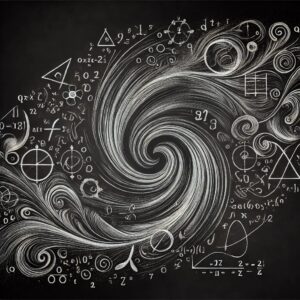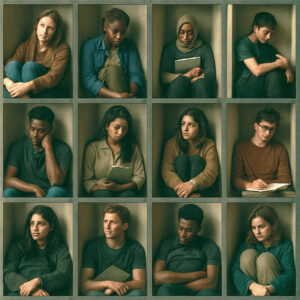Degrees of Difficulty: The Challenge of Equity in College Teaching, Worlding. (2025) 80 mini -chapters on inclusive learning and teaching.
Update Available: The Algorithmic Self, Worlding (2023). Essays on identity, pedagogy, media, data, an artificial intelligence.
Anxious Creativity: When Imagination Fails, Routledge (2020). Essays on creativity in academic disciplines, art, business, and daily life.
Elsewhere in America: The Crisis of Belonging in Contemporary Culture, Routledge (2016). Essays on emerging forms of minoritization and division in an age of neoliberalism.
Worlding: Identity, Media, and Imagination in a Digital Age, Routledge (2013). Essays on subjectivity, diversity, virtual worlds, and social activism.
The End of Reading: From Gutenberg to Grand Theft Auto, Peter Lang (2010). Essays on language, writing, literacy, media, and new technology.
A Culture Divided: America’s Search for Unity, Routledge (November 2009). Essays on historical and contemporary political division in the U.S.
Everyday Culture: Finding and Making Meaning in a Changing World, Routledge (2007). Essays on the often unexamined potentials in everyday life.
The Myth of Media Violence: A Critical Introduction, Blackwell Publishers (2007). Essays on violent representations and public perceptions about them. Translation/publication in Turkish (2009).
Welcome to Cyberschool: Education at the Crossroads in the Information Age, Rowman and Littlefield (2001) Essays on the discourse and political economy of new technology in schools.
Cultural Democracy: Politics, Media, New Technology, State University of New York Press (1997). Essays on populism, cultural policy, and democratic theory. Translation/publication in Korean (2001). Translation/publication in Japanese (2001).
Reading Digital Culture, Blackwell Publishers (2001). Anthology of 35 essays by Stanley Aronowitz, Cameron Bailey, Anne Balsamo, Hakim Bey, Critical Art Ensemble, William Gibson, Felix Guattari, Donna Haraway, Lisa Nakamura, Mark Poster, Howard Rheingold, Andrew Ross, Herbert Schiller, Sandy Stone, Sherry Turkle, and Paul Virilio, among others.
Radical Democracy: Identity, Citizenship, and the State, Routledge, (1996). Anthology with contributions by Stanley Aronowitz, Seyla Benhabib, Amarpal Dhaliwal, Bogdan Denitch, Barbara Ehrenreich, Barbara Epstein, Jeffrey Escoffier, Dick Flacks, Nancy Fraser, Henry Giroux, bell hooks, Manning Marable, Michael Omi, David Plotke, Gayatri Chakravorty Spivak, Ellen Willis, Howard Winant, Eli Zaretsky.
The Crisis of Meaning in Culture and Education, University of Minnesota Press (1995). Essays on material culture, media literacy, arts funding, documentary practice, and nationalism, and identity. Translation/publication in Chinese (2009). Reissued in Minnesota Archive Editions (2009).
Cultural Pedagogy: Art/Education/Politics, Bergin and Garvey (1992). Essays on community education, media studies, and activist pedagogy from 1985 to 1991.









